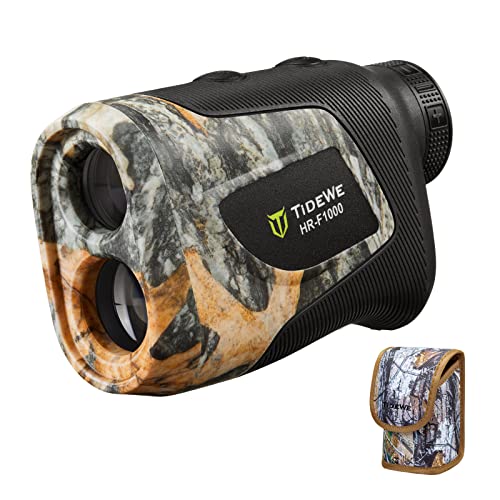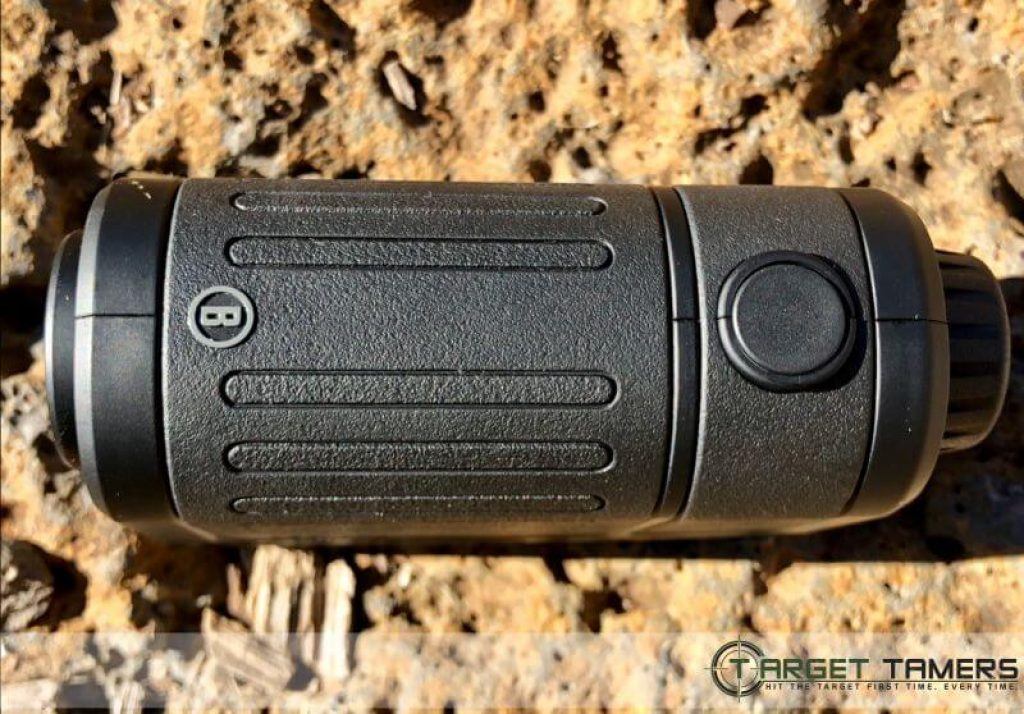This article contains affiliate links. We may earn a small commission if you purchase via these links.
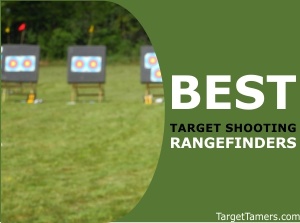
There's no need to eyeball the distance, even at a shooting/archery range or during practice for competitive shooting events.
And depending on how much of an enthusiast you are will determine how much you want out of a device.
For backyard fun, a basic line-of-sight distance unit will do the trick.
If you're a bit more serious about ranging, a more advanced and intelligent unit with a few perks like angle compensation, target modes, and low light functionality will be the difference between hitting the outer ring or the bullseye.
Check out our recommendations below to decide which one you are going to be taking to the range with you.
Best Target Shooting Rangefinders In 2024
| IMAGE | PRODUCT | DETAILS | |
|---|---|---|---|
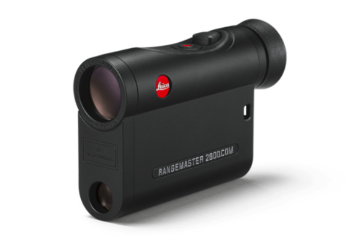 | Leica Rangemaster CRF 2800.com |
| CHECK PRICE |
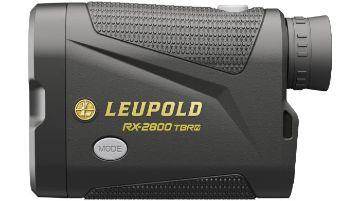 | Leupold RX-2800 TBR W |
| CHECK PRICE |
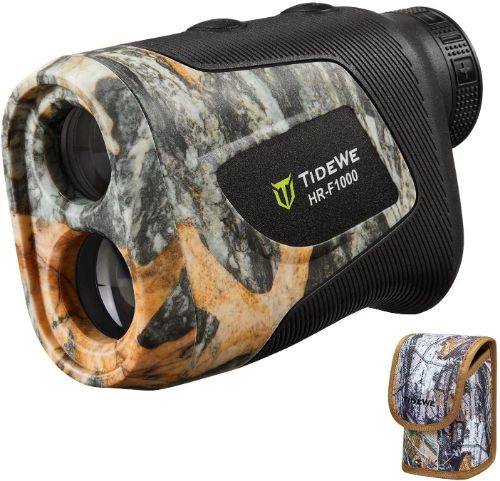 | TideWe 6x Hunting Rangefinder |
| CHECK PRICE |
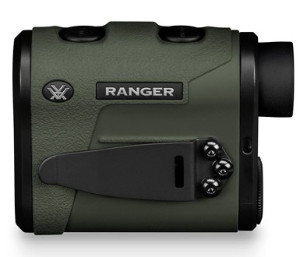 | Vortex Ranger 1800 |
| CHECK PRICE |
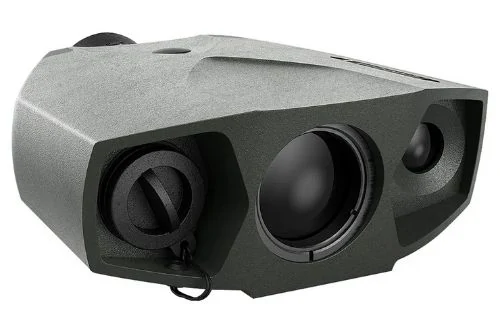 | Vectronix Terrapin X |
| CHECK PRICE |
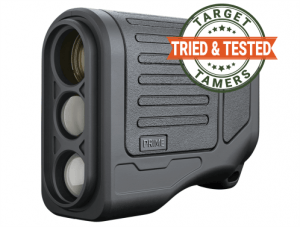 | Bushnell Prime 1300 |
| CHECK PRICE |
Why Trust Us?
After hundreds of hours of hand-testing rangefinders in the field and at the range, and thousands more hours researching and writing about them, we feel we earn the title of experts when it comes to optics!
We purchase as many of the optics for our tests as possible, and run them through their paces to make sure they will perform at the range and in the field.
Our combined decades of experience from rifle hunting and ethical hunting practices, to big game hunting and competitions has been integral in putting together this round-up of the best rangefinders for target shooting.
Get the inside scoop on how we test optics here.
Our 6 Top Rangefinders for Target Shooting
1. Leica Rangemaster CRF 2800.COM - Best Overall
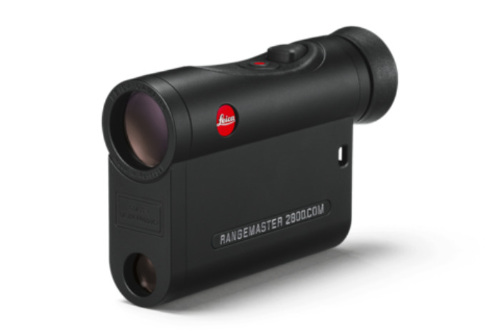
More shooters are wanting to combine their ballistic solver programs with their laser rangefinders to get more accurate analytical information to get on target. When this is the need, the Rangemaster CRF 2800.COM will satisfy.
Pros:
- Price
- Bluetooth
- Ballistics
- Kestrel connectivity
- Leica quality
Cons:
- Must be tech savvy
The primary feature that will attract long-range shooters is its Bluetooth ability. In this way, you can connect to both a smartphone app for custom profile transfers and 2-way talk with your Kestrel. Now this is a way to get multiple tasks done with a single, accurate distance on your LED ambient-controlled display.
Obviously, if you’re not techy to begin with or you don’t have the patience to learn the unit, then move on - less is more in your case. But for all those who need the additional data that a unit like this can provide, it’s worth it when you’re pinging steel 1000 yards and beyond.
It’s under $1000, so it’s not the cheapest unit out there but you have state-of-the-art tech and Leica optics and performance. The latter has a lot of weight in the optics industry, and it more than makes up for its 7x magnification and lack of tripod threading for mounting.
If you’re serious about having the extra tech for your long-range shooting needs, Leica is serious about putting it in your hands via the Rangemaster CRF 2800.COM.
2. TideWe Hunting 6x 700/100Y Camo – Best Budget Option
- 【INTEGRATED FUNCTIONS】TideWe rangefinder offers 6x magnification, and displays a straight-line vertical distance, horizontal distance, and speed to your target. We...
As a best seller rangefinder for its price and performance, you can’t go wrong with the TideWe Hunting model when the budget demands that you stay under $100. For casual target range use and some hunting, it gets it done.
Pros:
- Price
- 700/1000 yards
- Camo finish
- Angle/speed modes
- Rechargeable battery
Cons:
- Lowlight issues
The TideWe hunting rangefinder is likely to be picked up by a first-time buyer with a conservative budget. Two models offer 3 to 700 or 1000 yards in ranging with +/- 1-yard accuracy. Both have 6x magnification, 5.6oz in weight, LCD (black, non-illuminated) display, and a rechargeable Li-ion battery that can offer 20,000 actuations with a full charge.
Line-of-sight mode is perfect for target range practice, but angle compensation is convenient to take those practice skills to the treestand or for general rifle and archery hunts of average distances.
Additionally, it has a Scan mode and a function to measure speed. While speed mode displays in KM/H measurements, TideWe says that it actually measures speed in miles per hour (MPH) and not kilometers per hour. Confusing, yes, but that’s what they said.
The optical quality is overall underwhelming, but it does have a clear and sharp center. Off-axis distortion is apparent but not too distracting for range use.
The LCD display has inherent issues for ranging in lowlight conditions or in dark, shaded areas. So, while well-suited to target shooting, you’ll still want binos for the hunt to pair with the TideWe. Overall, it’s a functional rangefinder that offers casual target shooters affordability and performance.
3. Leupold RX 2800 TBR/W
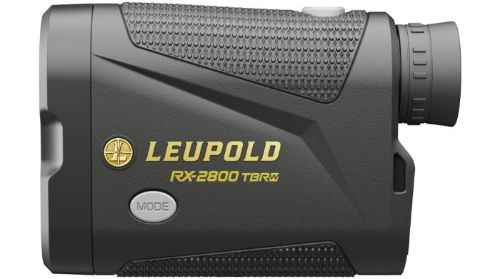
If you’re looking to integrate your ballistic data and rangefinder into one device without the hassles of SD cards or Bluetooth, the RX 2800 TBR/W is the solution in product form.
Pros:
- Pre-loaded loads
- 4 TBR modes
- Scan mode
- 2800-yard range
- Selectable reticles
Cons:
- Can’t customize wind drift values
The RX 2800 is a long-ranging unit that both bench shooters and hunters will come to love. How is it different from any other high-end rangefinder? It has Leupold’s legendary TBR with Wind technology that may prove beneficial for competition gunners.
The Alpha IQ gives the ranging engine a boost in performance and the TBR shines when more than just LOS is required. Yes, you get angle compensation to boot but also a whole lot more.
The unit is calibrated to provide for wind drift at a fixed speed of 10 mph at a 90-degree angle to the muzzle. Leupold provides an easy-to-understand chart to figure out adjustment values when conditions aren’t to spec. So, yes there is still some math involved.
With 4 TBR modes and having selected the appropriate load group and sight-in range, you can also acquire equivalent vertical ranges and MIL or MOA adjustment values. How’s about that for doing the math?
There is so much more to be said about the RX unit. The short of it is, it’s a high-performing rangefinder that continues to be a legend in the market. It might not be as long-ranging as some of the 4000+ units out there, but it sure does a whole lot more when it comes to ballistics.
4. Vortex Ranger 1800 Review
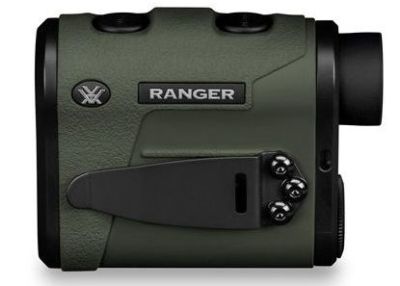
Why go anywhere else if you want quality, performance, and a rock-solid warranty? Vortex nails all three features when shopping for a sports optic, and the Ranger 1800 is the rangefinder of choice for many a hunter and shooter.
Pros:
- Price
- Long-range
- 6x magnification
- HCD Mode
- LED display
Cons:
- Difficult to get readings past 1000 yards
The Ranger is a 6x magnification unit that can be used handheld up to approximately 1,000 yards. We say 1000 yards because some users have experienced inaccurate or no readings past that distance. However, if you mount this to a tripod, you should be able to get it steady enough, and conditions permitting, acquire a reading.
Vortex says you can get a reading on deer up to 900 yards. With 17 mm of eye relief, users who wear glasses may struggle, but it should be plenty enough comfort for the naked eye.
With fully multi-coated optics and an illuminated reticle with three brightness settings, you’ll be able to see your readings regardless of the conditions.
It has LOS (Line of Sight), Scan, and HCD (Horizontal Component Distance) modes. HCD is Vortex’s angle compensation algorithm that provides measurements for steep angles like when you’re in a tree stand.
Yes, you can bet you can take this up into the tree stand with you since it’s weighs nothing at 7.7 oz, is 3.9 x 3” in size, and it comes with a built-in utility clip, neck lanyard, and carry case.
Have issues with the Ranger? Send it in and Vortex will take care of it with their industry-best VIP warranty.
5. Vectronix Terrapin X – Best for Competition
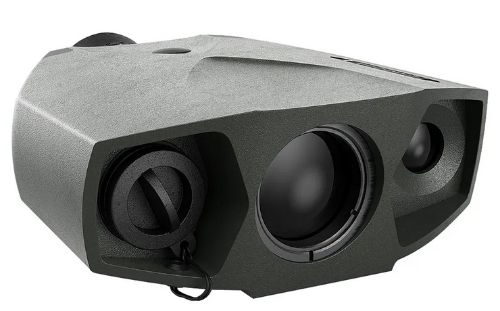
The Vectronix Terrapin X is well-known to those who demand absolute precision from a rangefinder. It's overkill for some applications, but for those who compete and need accuracy with the same level of match perfection for range practice, look no further than the Terrapin.
Pros:
- 3280 yards
- LED display
- Military-grade
- 1.25 x 0.5 Mrad beam divergence
- Wireless compatibility with Kestrel
Cons:
- Price
Vectronix teamed up with Leica for manufacturing and access to high-grade materials to make the Terrapin X. Extreme precision accuracy and quality was guaranteed from the engineering process.
The Terrapin X has 3280 yards of max ranging, accuracy of 5 yards (approx.) after 2000 yards, and 8x magnification with a 28mm objective lens. In quality and performance, it’s comparable to Leica’s CRF and Geovid models, and it has a very tight and impressive 1.25 x 0.5 mrad beam divergence.
It’s compatible with the Kestrel 5700 Applied Ballistics Line and the Hornady Kestrel with wireless connectivity. The OLED display is kept clear and uncluttered, but with fast presses and a Kestrel, you can move from LOS, angle compensated distance, angle, and compass direction for instant compensation, ballistic, and corrected W/E measurements for long-range shots.
For how fancy and expensive it is, it still offers the basics that we appreciate in a high-end rangefinder: waterproof protection (submersible), extreme climate operation (-68-131° F), and .25” threaded connection for mounting stability.
For the very best that the Military, Special Forces, and competitive world long-range shooters depend on, the Vectronix Terrapin X will help take your target shooting experience from amateur to professional.
6. Bushnell Prime 1300
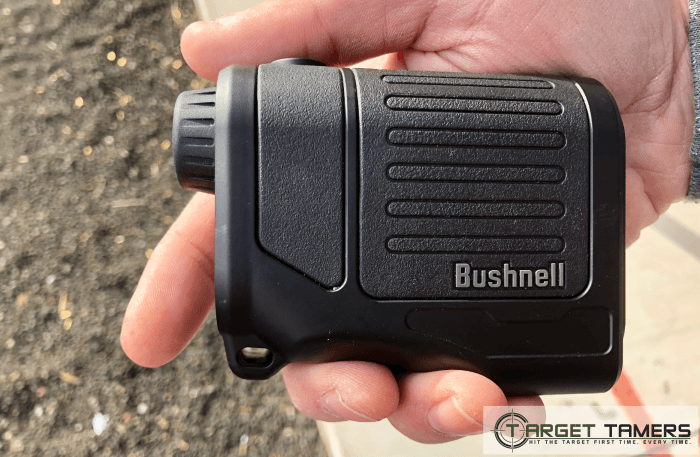
The Prime rangefinder offers efficiency in the simplest way possible. If you want fast, accurate results with no-fuss operation, the Prime LRF is definitely the unit you're looking for.
It's a 5x20 rangefinder that's stable enough to use in any terrain. It's compact, lightweight, and has a good, solid feel to it. This particular model has a maximum ranging distance of 1300 yards with only 350 yards to deer. Most hunters in the open plains or thick timbers will more than make do with these numbers.
Additionally, the Prime 1300 has a built-in inclinometer allowing for angle compensated distances to be displayed. The ease of use comes in with the automatic display of the true horizontal distance.
There is no "on/off" feature so you don't have to mess with any modes, functions, or features. Just hit the fire button and you have both the line of sight and angle compensated distance on the display.
You could criticize the Prime for being simple or not flashy enough for your taste, but out in the field, you'll appreciate the no-nonsense interface. This unit was made for a hunter interested in hunting, not for an amateur looking to tote a mini computer.
The Prime has our two thumbs up. It's worth checking it out.
What to Look for in a Target Shooting Rangefinder
If you're already a hunting with a rangefinder, then you're probably just going to use the same one for the target range too.
However, for those who just want something specific for the range, there's a few things you should know so that you can save as much money on your buy as possible.
Check out what I have to say about rangefinder must-have features.
Budget
There's no point shelling out for a feature for the field if you're never going to use it in the field. If you don't need angle compensation, you can save some money with a cheaper unit. If you need high magnification, you'll be hard-pressed to find rangefinders over 8x.
The next step up in magnification would be to consider rangefinder binoculars.
| Rangefinder | Price | Key Feature | Magnification |
|---|---|---|---|
| Leica Rangemaster CRF 2800.com | Under $800 | EHR, Bluetooth | 7x |
| Leupold RX-2800 TBR W | Under $600 | TBR w/Wind & Ballistics | 7x |
| TideWe 6X Hunting Rangefinder | Under $150 | Speed Mode | 6x |
| Vortex Ranger 1800 | Under $400 | HCD Mode | 6x |
| Vectronix Terrapin X | Under $2000 | Works w/Kestrel | 8x |
| Bushnell Prime 1300 | Under $200 | ARC Technology | 5x |
Size & Weight
In general, rangefinders are compact and lightweight optics. Typically, they can fit inside a jacket or cargo pocket or they may come with a utility clip for attaching to a belt, vest pouch, or gear.
| Rangefinder | Size | Weight |
|---|---|---|
| Leica Rangemaster CRF 2800.com | 4.44 x 2.95 x 3.4 inches | 6.7 oz |
| Leupold RX-2800 TBR W | 4.3 x 3.0 x 1.5 inches | 7.9 oz |
| TideWe 6X Hunting Rangefinder | 4.12 x 2.61 x 1.5 inches | 5.6 oz |
| Vortex Ranger 1800 | 3.9 x 3.0 x unspec | 7.7 oz |
| Vectronix Terrapin X | 5.35 x 4.64 x 1.8 inches | 13.7 oz |
| Bushnell Prime 1300 | 4.27 x 2.75 x1.47 inches | 5.9 oz |
Durability & Tripod Adaptability
On average, quality rangefinders will be weatherproof and depending on the magnification and maximum range, they can be tripod mounted. Though tripod mounting isn't a must-have feature for the 100-yard range, it could be an invaluable feature if you're ranging out to 1000 yards to hit steel.
Though shooting in the rain is not exactly fun with gear everywhere, mud, and low visibility, you still want your optics to work afterwards. With O-ring sealed and gas-purged units, you're buying confidence.
| Rangefinder | Waterproof | Fogproof | Tripod Receiver |
|---|---|---|---|
| Leica Rangemaster CRF 2800.com | Yes | Yes | No |
| Leupold RX-2800 TBR W | Yes | Yes | Yes |
| TideWe 6x Hunting Rangefinder | No* | No | No |
| Vortex Ranger 1800 | Yes | Yes | Yes |
| Vectronix Terrapin X | Yes | Yes | Yes |
| Bushnell Prime 1300 | No* | No | No |
*Water-resistant
Ranging Distance & Angle Compensation
The maximum reflective ranging performance will almost always be appropriate for target shooting. Most rangefinders, regardless of quality and cost, will cater to most target shooting distances of between 25-300 yards.
More extreme distances will be long range shooting and you'll want higher quality glass to get the best image quality at those distances.
Angle compensation isn't necessarily a must-have feature for target shooting, but you must be the judge of that. If your range is on flat ground out to a few hundred yards, then you won't need it. But for those who shooting out in the boonies with targets set up at various points, you might find that the angle can affect your accuracy.
| Rangefinder | Maximum Range | Angle Compensation |
|---|---|---|
| Leica Rangemaster CRF 2800.com | 2800 yards | Yes |
| Leupold RX-2800 TBR W | 2800 yards | Yes |
| TideWe 6x Hunting Rangefinder | 1000 yards | Yes |
| Vortex Ranger 1800 | 1800 yards | Yes |
| Vectronix Terrapin X | 3280 yards | Yes |
| Bushnell Prime 1300 | 1300 yards | Yes |
The Right Rangefinder for the Job
Whether it's hitting metal at the range or competition shooting, a rangefinder can save you a lot of time and a lot of misses.
While a spotting scope can really get you up-close and personal insight of your bullet strikes, a rangefinder can do the same job, and it can help you get your rifle scope or bow pin adjusted for the right distance.
Plink, shoot, and nock your way to accuracy. A laser rangefinder is just the right tool for the job.
Further Reading

